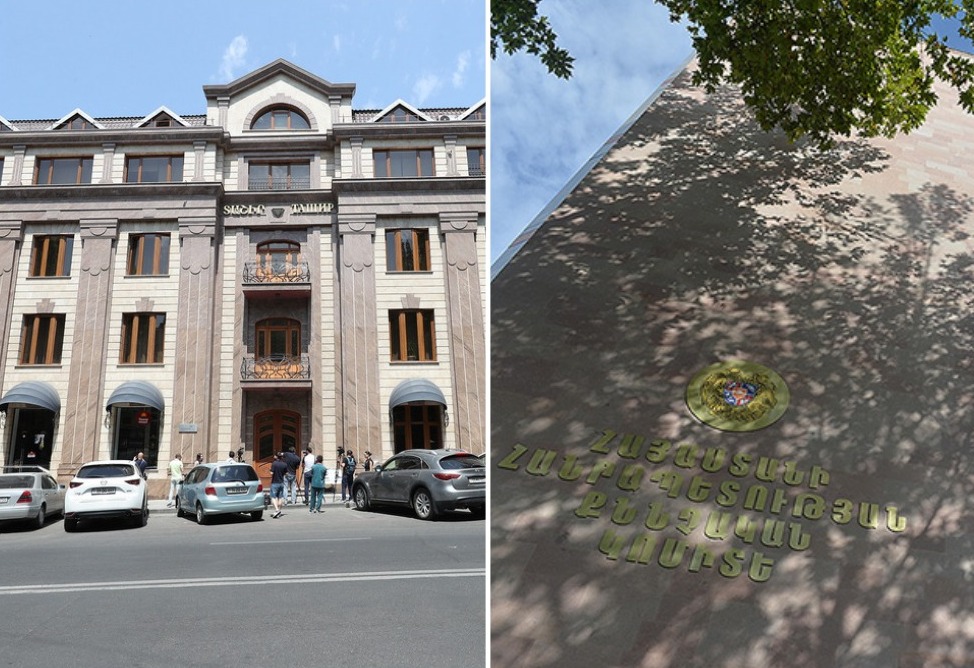Armenia is up two notches in Global Competitiveness Index 2018
17.10.2018,
16:45
Armenia has improved its position in the Global Competitiveness Index 2018, released by the World Economic Forum (WEF), having risen by two notches to the 70th position out of 140 surveyed countries finding itself between Azerbaijan and Montenegro, Sevak Hovhannisyan from the Economics and Values Yerevan-based think tank told a news conference today.

YEREVAN, October 17 /ARKA/. Armenia has improved its position in the Global Competitiveness Index 2018, released by the World Economic Forum (WEF), having risen by two notches to the 70th position out of 140 surveyed countries finding itself between Azerbaijan and Montenegro, Sevak Hovhannisyan from the Economics and Values Yerevan-based think tank told a news conference today.
He said Armenia is behind Russia (43rd), Kazakhstan (59th), Georgia (66th) and Azerbaijan (69th), but is ahead of Ukraine (83rd), Moldova (88th), Kyrgyzstan (97th) and Tajikistan (102nd).
Hovhannisyan said across Eurasia, the largest progress was made by Ukraine, which has improved its standing by 6 points. Kyrgyzstan rose by three points, Armenia and Russia by 2 points, and Georgia only by one. Other regional countries saw their ranking drop- Tajikistan’s position fell by 5 points, Azerbaijan’s by 4 and Moldova’s by 1.
Armenia’s best ranking was in the "labor market" category, where it is ranked 33rd. In the category ‘health’ Armenia scored 83 points out of 100 possible. It has the worst indicator in the category ‘market size’ being 118th, which is also due to the geographical size of the country.
The Global Competitiveness Index says Armenia’s most attractive advantages are the ratio of the number of students per teacher (5th ), the ease of hiring foreign labor (8th), the number of procedures, conditions and costs for starting a business (17-20th, flexibility of hiring and dismissing of employees (27th).
The country’s s competitive disadvantages are the level of social capital (122nd), the level of development of transport infrastructures (112th) and the capital market (110th), labor mobility within the country (110th) and difficulties with customs tariffs (106th).
The 2018 ranking is topped by the United States, Singapore, Germany, Switzerland, and Japan, which, with the exception of Japan, have retained their positions. Japan has risen from 8th position to the 5th.
The WEF assesses the world’s biggest economies across almost 100 different indicators, from the quality of infrastructure to life expectancy and the jobs market. This year it also added several new metrics to its 2018 study, such as workforce diversity, press freedom and how hierarchical the biggest companies are in a particular economy.
The Economics and Values think-tank is a partner of the Global Competitiveness Network of the World Economic Forum. -0-
He said Armenia is behind Russia (43rd), Kazakhstan (59th), Georgia (66th) and Azerbaijan (69th), but is ahead of Ukraine (83rd), Moldova (88th), Kyrgyzstan (97th) and Tajikistan (102nd).
Hovhannisyan said across Eurasia, the largest progress was made by Ukraine, which has improved its standing by 6 points. Kyrgyzstan rose by three points, Armenia and Russia by 2 points, and Georgia only by one. Other regional countries saw their ranking drop- Tajikistan’s position fell by 5 points, Azerbaijan’s by 4 and Moldova’s by 1.
Armenia’s best ranking was in the "labor market" category, where it is ranked 33rd. In the category ‘health’ Armenia scored 83 points out of 100 possible. It has the worst indicator in the category ‘market size’ being 118th, which is also due to the geographical size of the country.
The Global Competitiveness Index says Armenia’s most attractive advantages are the ratio of the number of students per teacher (5th ), the ease of hiring foreign labor (8th), the number of procedures, conditions and costs for starting a business (17-20th, flexibility of hiring and dismissing of employees (27th).
The country’s s competitive disadvantages are the level of social capital (122nd), the level of development of transport infrastructures (112th) and the capital market (110th), labor mobility within the country (110th) and difficulties with customs tariffs (106th).
The 2018 ranking is topped by the United States, Singapore, Germany, Switzerland, and Japan, which, with the exception of Japan, have retained their positions. Japan has risen from 8th position to the 5th.
The WEF assesses the world’s biggest economies across almost 100 different indicators, from the quality of infrastructure to life expectancy and the jobs market. This year it also added several new metrics to its 2018 study, such as workforce diversity, press freedom and how hierarchical the biggest companies are in a particular economy.
The Economics and Values think-tank is a partner of the Global Competitiveness Network of the World Economic Forum. -0-



